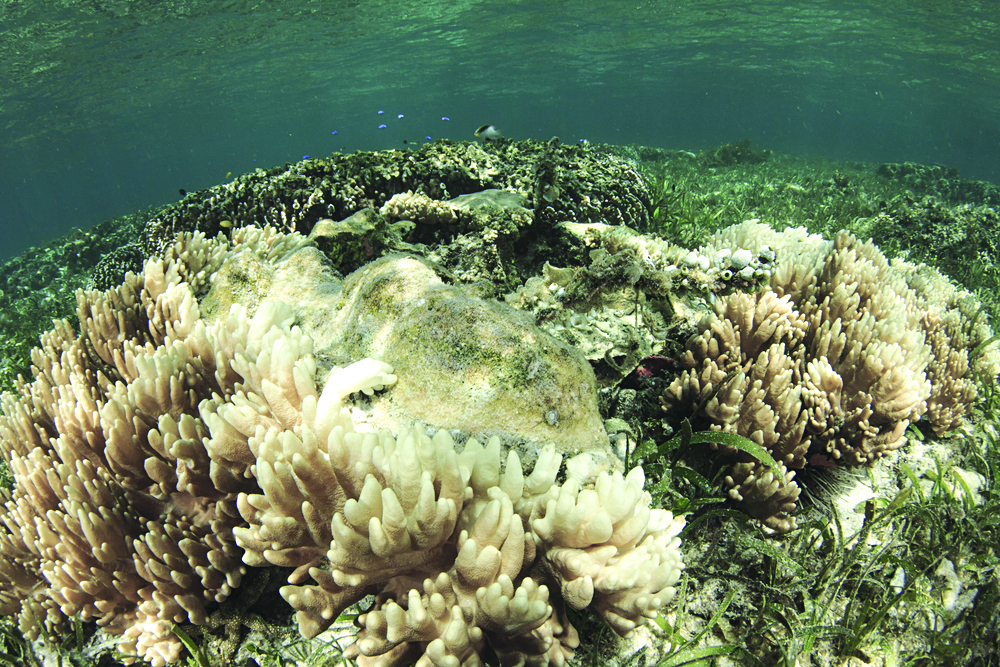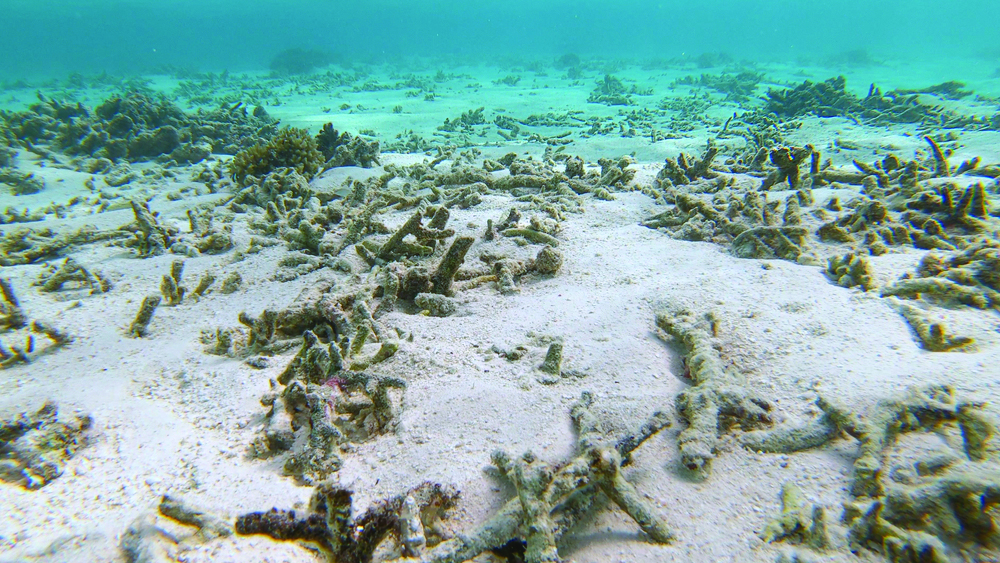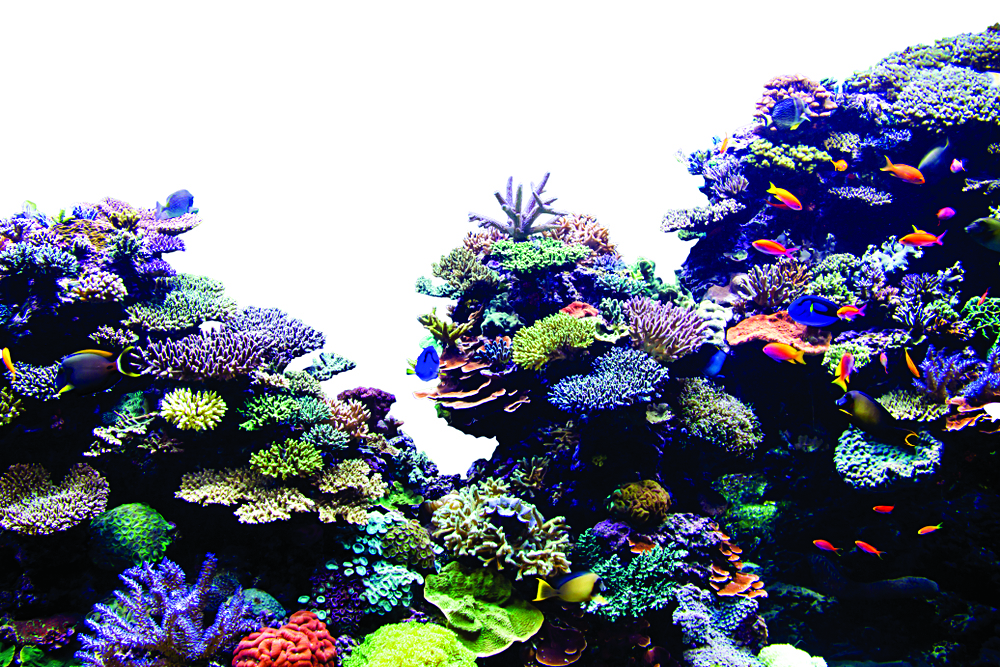Are they an animal, plant, or rock? This sneaky marine creature is a little bit of everything. They’re not that hard to find, though. You may have even seen them during your summer vacation.
Let’s take a quick dive into these celebrity marine Animals!

Tubbataha Reef
COMMEMORATING CORALS
Coral Reef Awareness Week is celebrated annually starting on Monday of the third full week in July. This year, we’re celebrating it from July 17 to 23. Hop on board the Coral craze!
Coral reefs or bahura are tourist hotspots in the Philippines. There are several famous dive spots, such as Tubbataha near Cagayancillo, Apo Reef off the coast of Occidental Mindoro, and the Verde Island Passage and Anilao in Batangas. Divers flock to these habitats to marvel at their stunning forms and the marine life that calls them home.

TEAMWORK MAKES THE DREAM WORK
If you zoom in on the surface of a typical Coral, you’ll see that they’re made up of hundreds to thousands of tiny cells called polyps. Each colony is considered one animal as they all work together to survive.
BUILDING REEFS FROM THE GROUND UP
Corals are closely related to jellyfish and anemone. All of them are classified under Phylum Cnidaria because they all tend to have cnidocytes, a special kind of cell that has tentacles used to grab food.
According to the Coral Reef Alliance, there are two kinds of Coral: hard and soft. Hard Corals, also called stony Corals, grow a protective skeleton made of calcium carbonate. The polyps live in holes dotting the skeleton like a little apartment building.


Soft Corals are also mistaken for plants because of their graceful form. (Randall Chua)
They also work together with zooxanthellae (zo-zan-THEL-ee), a kind of algae that lives in the polyps and makes food using sunlight just like a plant. This symbiotic relationship means that the Coral get food from the zooxanthellae in exchange for protecting them.
Hard Corals are also called reef-building Corals because their skeletons build up into rocks over time. Through the years, young Corals will build their foundations on older ones.
Soft Corals, on the other hand, are also made up of polyps, but don’t have hard skeletons. Instead they usually grow a woody core for support and tend to look more like fan shapes or even resembling bushes, whips, or grasses.

MISTAKEN IDENTITY
Corals can easily be mistaken as plants, possibly because of how they look or how they can create their own food (with the help of their algae buddies). When we see Corals, they’re in the sessile adult stage, which means they’re rooted to a surface and don’t need to move.
They weren’t always like this though. When Corals spawn, they start as larvae who swim and follow the ocean currents until they find the perfect place to settle. For many Corals, this means a sturdy foundation and sources of food, oftentimes an existing Coral reef.
According to the United States National Oceanic and Atmospheric Administration, Corals that live in the deep sea don’t get enough sunlight to have zooxanthellae. Instead, their polyps grab Plankton and other organic matter from the water as food.

TOO HOT TO HANDLE
Coral reefs face many threats, from murky polluted water that blocks sunlight to warming temperatures from climate change. When the Corals get too hot, they release their zooxanthellae buddies, resulting in Coral bleaching. Normally, the algae return over time, but only when the water becomes cooler. If not, the Corals can starve and eventually die.

WHAT HAPPENS IF ALL CORALS DIE?
According to National Geographic, Coral reefs are also known as the “rainforests of the sea” by being home to around a quarter of all marine species. They act as a nursery for many kinds of marine creatures by providing food and a safe space to grow. Colorful Fishes, Nudibranchs, Sharks, Sea Stars, Eels and many more flock to Coral reefs.
People, too, are protected by reefs, since these can protect coastlines from storm waves, and are also fed by reefs, since these support coastal communities’ livelihoods. Without Corals, our oceans would have fewer wildlife and communities would be at risk.


WHAT CAN WE DO TO PROTECT CORAL REEFS?
As we celebrate Coral Reef Awareness Week, there are many ways you can help protect them! According to Job Ochoa, a Program Officer at the SEA Institute Verde Island Passage, here are some things you can do.


THE DANGERS OF SUNSCREEN
According to the Oceanic Society, avoid sunscreens that have oxybenzone and octinoxate because these leach into the water as you swim. The 2015 study led by Craig A. Downs explained that oxybenzone can induce more Coral bleaching and deformities.







